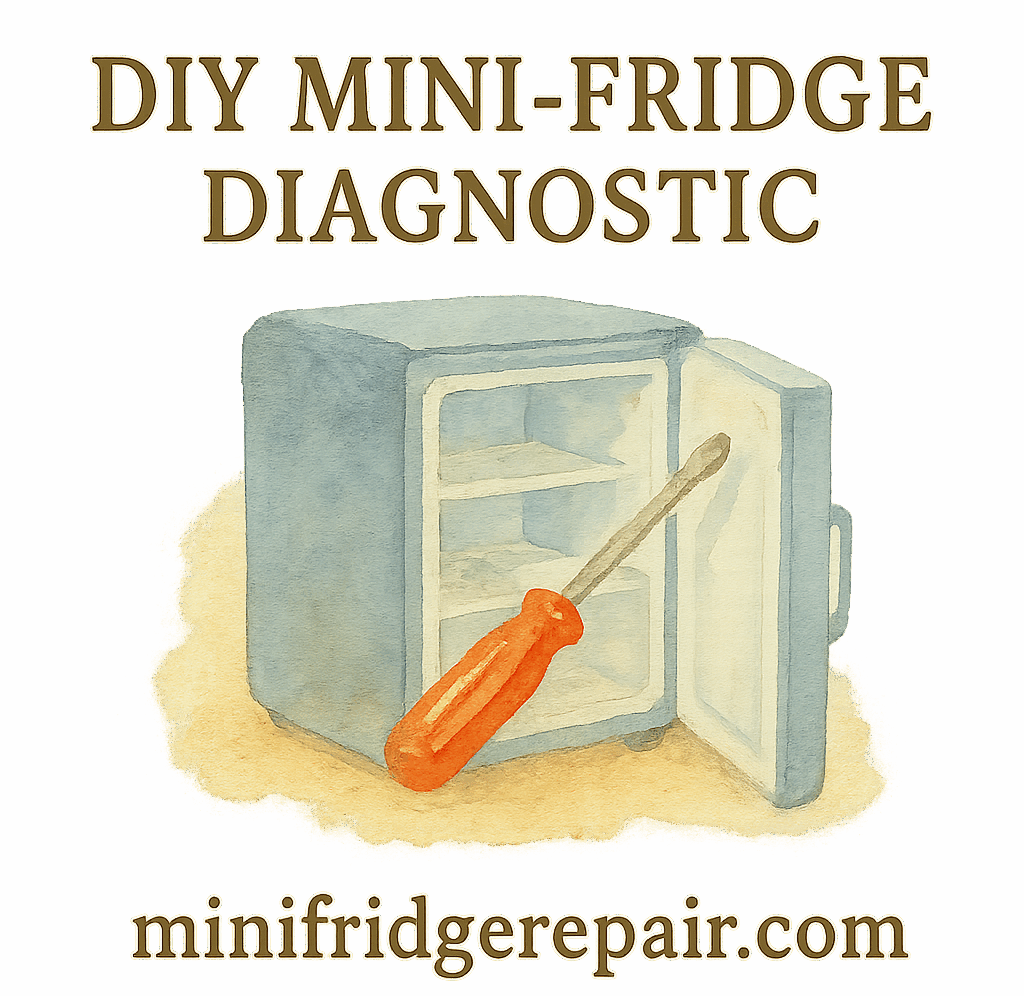Introduction: Why Mini-Fridge Repair Matters
Your mini-fridge might be small, but it plays a big role in your everyday life. Whether you use it in your dorm, office, bedroom, or man cave, it keeps your drinks cold and your snacks fresh. But here’s the thing—mini-fridges don’t last forever. Without proper care and repair, they can wear out fast, costing you more money down the road. The good news? With a few simple mini-fridge repair steps, you can extend its lifespan and keep it running efficiently for years.
If you’re serious about saving money and avoiding replacement costs, these four steps are your ultimate mini-fridge survival guide.
Step 1: Diagnose the Problem Before Repair
Before grabbing your toolbox, you need to figure out what’s wrong. Mini-fridges can show early warning signs before completely breaking down.
Common Signs Your Mini-Fridge Needs Repair
- Food isn’t staying cold enough.
- Strange buzzing or rattling noises.
- Water pooling inside the fridge.
- Ice building up too quickly.
- The compressor is running non-stop.
If you notice these signs, it’s time to dive deeper into mini-fridge troubleshooting. Check out this troubleshooting mini-fridge issues guide for step-by-step help.
Tools Needed for Basic Mini-Fridge Diagnosis
- Screwdriver set
- Multimeter
- Cleaning brush
- Flashlight
- Replacement seals (optional)
A simple toolkit like this allows you to test cooling efficiency, check wiring, and spot damaged components without calling a professional right away.
When to Use a Troubleshooting Guide
Not all fridge issues are obvious. Sometimes your fridge stops cooling due to thermostat issues, wiring failures, or blocked vents. In such cases, guides like mini-fridge repair basics are extremely helpful.
Step 2: Clean and Maintain Your Mini-Fridge Regularly
Think of your mini-fridge like a car—it needs regular cleaning to keep running smoothly. Dirt and dust clogging the coils or fans can reduce cooling efficiency.
Cleaning the Coils for Better Cooling
Dirty condenser coils are one of the most common mini-fridge issues. A clogged coil forces the compressor to work harder, leading to overheating. Use a coil brush or vacuum cleaner to remove dust every few months.
For more tips, check out fridge maintenance advice.
Defrosting and Fixing Ice Build-Up
If your freezer section looks like the North Pole, it’s time to defrost. Excess frost reduces airflow and affects cooling performance. Follow defrost heater fix tips to keep your fridge ice-free.
Energy-Efficient Maintenance Habits
Keeping your mini-fridge energy efficient doesn’t just save electricity—it also extends its life. Simple steps like keeping the door closed, avoiding overloading, and cleaning seals can make a big difference. Learn more about energy efficiency in mini-fridges.
Step 3: Replace Worn-Out Parts Yourself
One of the best ways to extend your mini-fridge lifespan is through DIY part replacements.
DIY Mini-Fridge Part Replacement Tips
With the right instructions, you can replace thermostats, fans, or seals at home. Check out DIY mini-fridge part replacements for step-by-step tutorials.
Identifying When a Part Needs Replacement
Look for these telltale signs:
- The fridge isn’t cooling, even after cleaning.
- The door gasket is loose or cracked.
- The fan isn’t spinning.
- The thermostat doesn’t respond.
More details are available in the fridge part replacement guide.
Advanced Mini-Fridge Repair Guides
For tougher problems like compressor failures or advanced wiring repairs, refer to advanced mini-fridge repair guides.

Step 4: Optimize Cooling Performance
Sometimes, it’s not just about fixing a broken part—it’s about improving your fridge’s overall performance.
Checking Thermostat and Cooling Speed
The thermostat controls how cold your fridge gets. If your drinks aren’t chilling fast enough, you may need to adjust or replace it. Learn more about cooling speed optimization.
Fixing Defrost Heater Issues
A faulty defrost heater can cause frost buildup and reduced airflow. Here’s where defrost heater fix guides come in handy.
Improving Overall Fridge Performance
Regularly monitor your mini-fridge for unusual temperature shifts or performance drops. Explore more on fridge performance to maximize efficiency.
Extra Tips to Extend Mini-Fridge Lifespan
Beyond these four steps, here are some golden rules:
Signs It’s Time for Professional Help
Sometimes, DIY isn’t enough. If your compressor is dead or electrical wiring is fried, it’s better to call a professional.
How to Avoid Frequent Mini-Fridge Issues
- Don’t overload with food.
- Keep the fridge away from direct sunlight.
- Avoid plugging it into weak extension cords.
- Regularly check seals and fans.
For more helpful insights, see fridge troubleshooting.
Conclusion
Your mini-fridge can last years longer if you take care of it. By diagnosing problems early, cleaning regularly, replacing worn-out parts, and optimizing cooling, you can keep it in top shape. Think of these four repair steps as a health check-up for your fridge—skip them, and you’ll be shopping for a new one sooner than you’d like.
So grab your toolkit, roll up your sleeves, and give your mini-fridge the attention it deserves.
FAQs
1. How often should I clean my mini-fridge coils?
At least every 3–6 months for optimal performance.
2. What’s the first sign my mini-fridge needs repair?
Usually, it’s when food isn’t staying cold or ice builds up too quickly.
3. Can I replace a mini-fridge thermostat myself?
Yes, with the right tools and a guide like DIY fridge repair.
4. Why does my mini-fridge make buzzing noises?
It could be the compressor or fan struggling.
5. How do I improve mini-fridge cooling speed?
Check the thermostat and clean the coils regularly.
6. Should I attempt advanced mini-fridge repairs at home?
Only if you’re confident—otherwise, use advanced repair guides or call a pro.
7. What’s the average lifespan of a mini-fridge?
With good maintenance, 8–12 years is common.
